Proteins in hair care was a subject I had little or no education about before transitioning to natural hair. I knew people did homemade hair treatments with egg because they were supposed to benefit our hair but I never knew why. In fact, buying a moisturising or reconstructive deep conditioner was the same to me. I know we are all very educated on how much our hair needs water, but how educated are we about the role proteins play in our hair care?
WHAT ARE PROTEINS
If we talk about proteins people can easily identify it as a macronutrient in food alongside carbohydrates or fat, however, a significant part of us humans is also made of proteins, about 15% to be more precise. On the big picture, proteins are the building blocks of our muscles, cartilage, skin, nails and hair. But other important functions are also maintained by smaller protein molecules such as insulin or haemoglobin.
To keep our bodies functioning well we need proteins in our diet. Now, when we talk about hair and proteins it is important to understand the latter is very important because they are the main component of hair at approximately 91% with water, lipids, traces of minerals and melanin being the other constituents.
Proteins are made of small amino acids joined together to form long chains. Picture a train and its carriages, where each carriage is a small amino acid held together by peptide bonds and the whole train forms the long chain of amino acids. Now, you can have just a few hundred carriages (blocks of amino acid) or several thousand and each protein will have its own unique and complex combination since there are 20 different amino acids.
WHY ARE THEY IMPORTANT TO OUR HAIR?
Well, we have already established that proteins form the majority of out hair, so its importance is undeniable. Proteins we ingest in our diet are important to support our hair health and growth, having a poor diet can result in dry and brittle hair and even hair loss. Proteins have an important function in our hair and can affect the structure of our hair. So where exactly are they located, how easily are they affected and by what?
HAIR STRUCTURE
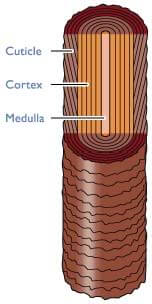
The human hair shaft has three layers the cuticle, the cortex and the medulla. The Cuticle is the external part of the hair and is formed by several layers of overlapping scales whose function is to protect the cortex. Next comes the Cortex which forms the bulk of our hair and is made of several protein bonds of which keratin is the main one. They provide our hair with its strength and elasticity making it pliable and resistant to breakage. This is where you will also find what gives our hair its colour – melanin. The innermost part of the hair is the Medulla and the cells that form it can be present or absent, its function is still not clear to scientists. Read Understanding You Curly Hair.
DAMAGE TO HAIR STRUCTURE AND PROTEIN
Despite being protected by a thick layer of 3 to 10 overlapping cuticle scales water can indirectly inflict damage to the cortex. When we wet our hair it swells and forces the cuticle layers to open outwards, in this condition they can be chipped, broken or ripped just from friction or manipulation leaving a dent or hole on the hair shaft that exposes the cortex and leaves it vulnerable to damage. Once damage to the cuticle scales progresses the integrity of the cortex is compromised and your hair will break easily, lack shine, strength and elasticity. This is how easy it can be to damage the protein in our hair!
WHAT CAN CAUSE DAMAGE TO PROTEIN IN HAIR
Many things can damage the proteins in our hair as we’ve seen just water alone can do that, and water is what natural curly hair most craves. Diet also has an effect on our hair proteins, but other external factors can damage the hair such as:
– Manipulation (i.e. hands, brush, comb, tight hairstyles)
– Friction (with clothes, hair, bed linen)
– Regular use of heat styling tools and/or use at high temperatures (i.e. blow dryers, curling and iron tools)
– Chemical Procedures (Relaxer, Perms, Bleach, Dye)
– Environment (the wind, low or high temperatures, air-conditioned, the sun)
– Sea Salt and Chlorine from swimming pools (know how to protect your hair before and after)
– Weathering of the hair, especially at the ends
Because at any given time we expose our hair to one or several of these factors, it is very important that we are able to repair and even prevent injury to the protein bonds in the cortex. This can be done with protein treatments that you can do at home or in a salon by a professional and they can be light or very intense depending on the health of your hair. These treatments have the ability to temporarily repair damage to the hair shaft by covering holes on the cuticle layer and strengthening protein bonds in the cortex. Let’s just say it fixes what needs fixing!
WHICH PROTEINS TO USE

Proteins are present in many foods and you’ve probably slathered your hair with a few homemade treatments with ingredients containing protein such as eggs, coconut milk, avocado or mayonnaise. And these are OK to use if your hair isn’t really damaged and you use them as a maintenance treatment or you believe it makes your hair feel better. There’s no harm doing here. However, if you bleach, dye, use regular heat and/or have severely damaged hair D.I.Y mixtures are simply not enough.
This is so because proteins from eggs and like ingredients are too big to penetrate the hair shaft and help repair the protein bonds in the cortex. At best, these big protein molecules will only repair damage at the cuticle level and they can possibly be removed once the hair is rinsed. However, if you feel your hair benefits from it keep doing it, I know I do! I love how my mayonnaise mix makes my hair feel.
For proteins to be able to penetrate into the cortex these have to be broken down into smaller pieces since the amino acids that composed them can have hundreds to thousands of bonds. These broken protein molecules are called hydrolysed proteins which are essentially made of two or more blocks of amino acids are small enough to “pierce” through the cuticle layer.
Hydrolysed proteins can adhere and form temporary bonds with proteins in the cortex and can also lay on the hair shaft to mend holes, chips and cracks. In doing this, they can be considered conditioning agents because they make our hair feel softer. They also have hydrating properties as the amino acids in it attract and retain water.
According to findings in a study (only abstract is available now), hair treated with hydrolysed proteins (wheat in this study) is able to retain moisture for long periods. Why is this important? It’s important because if the hair is severely injured it means it’s more porous, it’s brittle, dull, stiff and breaks easily. Hair treated with hydrolysed proteins is “mended” and retains water, and hydrated hair is flexible, has more shine, better definition and less frizz. What curly girl doesn’t want this!?
HYDROLYSED PROTEINS COMMONLY USED
Not all hydrolysed proteins have the same size and as such some will work better on the surface of the hair shaft while others will work both on the hair surface and in the cortex. Generally, hydrolysed silk, soy and keratin proteins have a low to medium size working on and in the hair, collagen has a medium to high size depositing on the cuticle layer and somewhat in the cortex, wheat and oat hydrolysed proteins have a high size and will work on the cuticle layers.
However, we can never be sure about the size of these proteins because it can be altered and the size is never specified on hair care product labels. How they’ll work on the hair depends on many factors, but overall proteins will do their best work, or their work will be more noticeable, on chemically treated hair. This hair has had the cuticle scales raised so the chemicals could work and damage to the cortex is irreparable, therefore, proteins will make a major difference.
HOW OFTEN SHOULD THEY BE USED
How often you should apply protein treatments on your hair depends on the unique health of your hair and what it is exposed to as I mentioned previously on damage to protein in hair. Once you have this information you will be able to assert the type of protein treatment you need and how often to do it. If you need help consult a trusted professional. Read more about deep conditioners to find the right one for you and how to add heat to increase its benefits.
DIFFERENT PROTEIN TREATMENTS
Protein Packs – these are appropriate if your hair is relatively healthy and you just need to maintain the integrity of your hair. They can be used every 4 to 6 weeks.
Light Protein Treatments – if you have some light damage these are ideal and you can use them every two weeks.
Deep Protein Treatments – they are best for moderately damaged hair and you can be used them every other week.
Intense Protein Treatment – use them every week if your hair is severely damaged.
Note – Always follow these treatments with a moisturising deep conditioner as they can be hard on your hair. Any indication of the frequency of proteins treatments is just a suggestion. If you feel your hair is too stiff or hard even after a moisture treatment increase the time between treatments.
Are proteins a part of your hair care? How often do you use them?
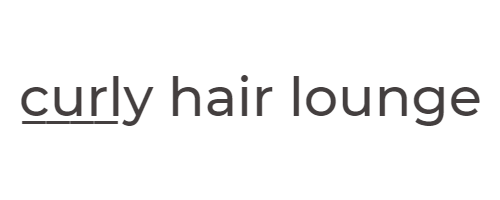
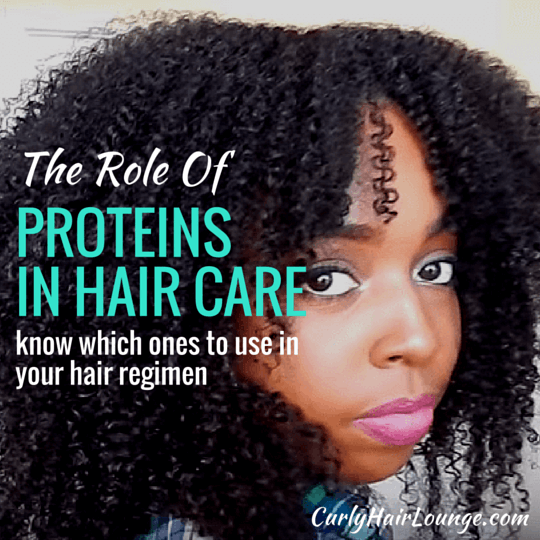
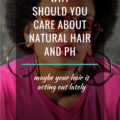

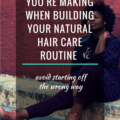

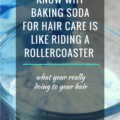
14 thoughts on “The Role Of Proteins In Hair Care”
Oh, my goodness! You would think after 62 years I would have learned this, especially since I have curly hair, my daddy’s curly hair.
This is a tremendously valuable set of facts. I especially enjoyed the understanding about the three major components of hair. Its quite interesting that the medulla is still not fully understood. Go figure, our age of technology and we are still seeking understanding of even the most common aspects of human existence, like our hair.
Today, my hair is long and I am gradually losing it. It makes me a bit scared really. Do you think that adding the protein treatments could make a difference in reducing hair loss? Which method would you recommend? Now that would be a great benefit, to be sure.
What do you think?
Linda
Hi Linda, it’s good to know you find the information in here informative. As for your hair loss the causes can be many such as diet, hormones, medication or even stress. First you need to asses if your experiencing hair breakage or hair shedding (read this article). Your diet also affects the health of your hair, there are things you can eat to improve it but generally speaking having a balanced and diverse diet with lots of vegetables and fruit will get you there (read more here). Doing protein treatments can strengthen your hair, but too much of it can also cause damage.
Check if you have hair shedding or breakage, take a look at your diet, see if you’re taking any medication or going under a period of stress in your life. If you still think you need help seek professional advice.
Hi Monica,
I enjoyed reading this article, being a fitness aficionado I was interested in the proteins, aminoacids, etc.
I remember my mother telling me that she used to put eggs on her hair, I never knew what for, it seemed ridiculous at first, but yeah eggs are protein bombs.
I didn’t know hair color was determined by melanin, I thought that was only on the skin.
Thanks and see ya
Hello Gaspar,
I’m very pleased you liked the article and you’re now able to understand why eggs are used in homemade hair recipes.
All the best.
Hello, thanks for well presented information here. I knew that is best to dry hair without intervention such as heat, dryer. Here I learned about importance of proteins, which are good not just for muscle building but for structure of hair too.
May hair are to curly side, not even , no curly, I do not know how you can call this type of hair. Anyway, they are friendly to me and do not make any problems if I take good care of them.
I think that I need to apply information from here and give more treatment to them.
I heard that protein treatments can be made at home. Maybe it is better compare from store? What do you think about it?
Somes I use a mask from eggs, yellow part, honey and sesame oil. It works perfectly for me.
Thanks for great blog, all the best, happy writing, Nemira.
Hi Nemira
Thanks for your feedback! Yes, you can make your own protein treatments at home and your mask is working for you so keep doing it. Just be aware that it’s a protein mask and you shouldn’t do it every time you wash your hair. Read more on making your DIY deep conditioners and on Choosing them.
Hey Monica, great to see another article from you =)
I just love this kind of educational articles, especially when they are very well presented in an organized and easy-to-understand manner.
Great coverage into the various factors that affects haircare. And the use of images are effective too.
Readers will definitely appreciate the different treatment suggestions and tips you provide.
Great job!
Hello, Farhan! I’m glad you’re here once again that means you enjoyed the content, right?! Great! Thank you for your words they mean a lot to me and push me to continue to do what I do. Thank You! Keep coming back Farhan.
wow your website is very amazing! its clear that you have a lot of passion for hair and you have experience in caring for curly hair. I never knew about proteins in hair and the structure of hair so all of this information is very interesting and new to me
Hello, jazzy323! It’s nice to know you like the look and feel of the website as well as the information in here. Yes, I do have a real passion for naturally curly hair, and I love sharing and being able to help someone in anyway love and care for their natural hair. I’m glad it shows in my writing.
All the best!
Hi Monica
Great article on proteins you have here. Am new to the lounge and very excited to be on board. Now I would like to know more on leave in treatments and their role in hair care. I am a 4C with super curly hair and earlier in the year I used to LOC with live in as the ‘L’ and not water. I did this on a daily basis(for a period of 3months) and noticed a lot of strength and minimal breakage… But I stopped at some point since I felt the hair had become a little’ too tough’,,I actually felt the structure was changing so I stopped. When I went reading I learnt that live-in is a light protein .
My question is how frequently should it be utilised? My hair strength has since reduced a little and is more prone to breakage. Moreover, finger detangling is really difficult and painful even after applying light oils such as coconut, olive, something that never used to happen when I would apply the live in.
Cheers
Sharon
Hi Sharon, glad to hear you´re new to the Lounge and you like this article. When using any product on your hair you need to check its ingredients. You say you noticed your hair become “too tough” and it could be the result of product build up or even excess protein on your hair from the leave-in alone or in conjunction with other hair products that also have protein. You would need to clarify your hair or start using a leave-in that doesn´t have proteins in it.
If your hair is healthy it doesn’t need much protein, maybe once or twice a month, you need to balance it. Check all you products, make sure it´s not present in several of them. You can also use water or a water + conditioner mix in a spray bottle.
When you say you have difficulties detangling your hair is it when you wash it or when you are styling it? You say you notice your hair is breaking, this means the cuticle layers of your hair are raised and which makes it harder to detangle your hair then having a smooth and healhy hair structure. Try using products that have ingredients that help with slip and create a layer on your hair that help to smooth it down such as oat, flax seed or marshmallow root gel, you can also use water-soluble silicones.
I hope this helps, without knowing your hair routine and products used it´s hard to give you more guidance. Let me know how this works Sharon.
Monica
Good day Monica, Is it okay if we would like to know what is the study`s title for further knowledge.
Thanks in advance!
Hello John. The study was available in full, but not anymore. Still, you can check the abstract. I’ve already replaced the link.